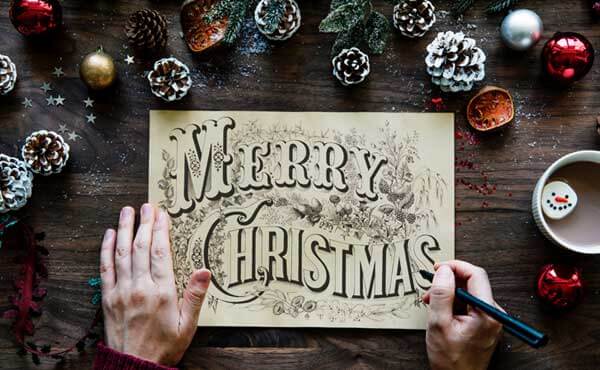日本の正月を英語で紹介しよう!

お正月は「Osyouが Two ではない」いきなりはずしたと思うが、お正月に外国人と出会ったとき英会話で日本の正月の文化などを英語で伝える場面も多いはずだ。
そんなときのために日本のお正月を英語で紹介した文章とVideoを作成した。ぜひ英会話で外国人に素晴らしい日本の正月の文化を紹介してほしい。
- 正月 SyoGatsu
- 初詣 HatsuMode
- 初夢 HatsuYume
- しめ飾り ShimeKazari
- 門松 KadoMatsu
- おせち料理 Osechiryouri
- 鏡餅 Kagami Mochi
- 雑煮 Zouni
1. 正月 SyoGatsu
- The New Year : one of the most important and oldest celebrations, for the Japanese.
- 正月は、日本人にとって最も大切な祝日の1つだと言える。
- Since before the sixth century in Japan everyone would be "Coming One Year Older" on "New Year's Day" regardless of their "actual" birthdate.
- 16世紀前から、日本人は各自の誕生日にかかわりなく、正月に1つ年をとる習わしだった。
- Most Japanese can enjoy celebrations during the first three days of the "New Year" with time off from work.
- ほとんどの日本人が、正月三賀日には休暇を取る。多くの会社や学校が、この時期は1週間かそれ以上の休日になる。
- Also many companies and schools close for one week or more during this season of New Year celebrations!
- 多くの会社や学校が、この時期は1週間かそれ以上の休日になる。
2. 初詣 HatsuMode
- Many Japanese people journey to Shinto shrines. During the first three days of January each "New Year", many people go to make traditional "New Year's" prayers for good health, fortune, wisdom and long life in the future year.
- 多くの日本人が、正月三賀日の間に、新年の健康や幸福の祈願のため神社に初詣に行く。
- Hatsu Mode, customarily called, the first visit of the New year, to Japanese shrines and Temples.
- 初詣とは、初めて詣でるという意味だ。
- MeiJiJinGu, attract more than three million worship followers, each year in Japan!
- 明治神宮のような有名な神社では、毎年300万人以上が初詣に訪れる。
- So a shrine, being open especially for the night of New Year's Eve, some wish to arrive, so to hear the JoYanoKana, bell right after,which rings out the, "Old Year". They hear the sounds of JoYano Kana, a huge Shrine Bell, which rings out the "Old Year" !
- 神社は大晦日の夜は特別に門を開いているので、中には大晦日の除夜の鐘を聞くとすぐ出かけてくる人もいる。
- People can buy - OMaMori - Good luck charms". Also HaMaYa "Sacred arrows", to invite good fortune for the New Year.
- 人々はそこでお守りや破魔矢を購入する。
- A person may attend "Seven Shrines of Seven Gods of Good Fortunes" a popular New Year's tradition and belief. Visiting all Seven Shrines, by January the Seventh, each person may receive Seven kinds of "good luck" : longevity, health, business, personal, virtue, wisdom, victory for all and of course "good luck" overall !
- 1月7日までに、七福神を祀る神社の全てに詣でる七福神参りも人気があり、長寿、財運、 商売繁盛、知恵、徳望、戦勝運、福徳という7種類の福がもたらされるとされている。
- HatsuMode will be one of few occasions for many people to wear their Kimonos, to this annual event !
- 初詣は、多くの日本人が着物を身に着ける、今日では数少ない行事の1つでもある。
3. 初夢 HatsuYume
- HatsuYume refers to any dreams, one has on the first night of the year. In the traditional way some Japanese judge their fortunes for the future year.
- 初夢は新年に初めて見る夢のことだ。日本には初夢でその年の運勢を占う習慣がある。
- Three of the dreams most believed to be are of Mt. Fuji, a Hawk, and an Eggplant.
- 最も縁起のよい夢は、 順に、富士山、鷹、ナスの夢だとされている。
- In belief, to have good dreams, some people put images of "The Ship of the Seven Gods of Good Fortune", carrying many treasures. Also, believe in a "Baku", an imaginary "Ant eater like" animal, believed to eat all their bad dreams, from under ones pillow, as they sleep!
- よい初夢を見るため、七福神の宝船の絵や、悪夢を食べてくれる想像の動物である獏の絵を枕の下に敷いて眠る人もいる。
4. しめ飾り ShimeKazari
- People decorate the entrance of their homes with ShimeKazari during New Year's customs to ward off evil spirits.
- 日本人は正月に、家の門戸に魔除けのためのしめ飾りを下げる。
- They are made of Shimenawa, sacred Shinto rope of rice straw, used to indicate the sacred areas where gods descend.
- しめ飾りに使うわらで編んだしめ縄は、神が降りてくる神聖な場所を示すものだ。
- ShimeNawa is a special kind of ShimeKazari, A thick straw rope decorated with various meaningful objects such as bitter oranges, ferns and lobsters.
- しめ飾りはそれに、縁起物のダイダイやシダ、エビなどを付けて特別に飾りにしたものだ。
- After the New Year's period is over, ShimeKazari and other New Year's decorations are placed at the shrines to prepare for, 'DondoYaki,to be burned during the ceremony.
- 正月期間が終わると、しめ飾りなどの正月の飾りは神社で燃やしてもらいます。
5. 門松 KadoMatsu
- KadoMatsu are a pair of pine decorations which are placed in front of the gates of ones residence, from January first to the seventh The period is known as MatsuNoUchi.
- 門松は、家の門の前に置かれる一対の松飾りで、松の内と呼ばれる元旦から7日までの期間置かれる。
- KadoMatsu consist of three bamboo trees assembled together, each of different lengths and cut diagonally at 45 degrees on the top portions. Pine tree branches and plum tree bows are fastened to the bamboo trees with different straw ropes. These three trees are considered sacred.
- 斜めに切られた長さの違う3本の竹に、松の枝と梅を新しい縄で結んだもので、松竹梅は縁起のよいものとされている。
- Especially the pine, which is a symbol of longevity, and the gods resided upon the offerings.
- とりわけ松は昔から長寿のシンボルであり、神が降り立つところという意味がある。
- They are taken away and burned upon after January the seventh at DondoYaki.
- 門松は1月7日に取りはずされ燃やされる。
6. おせち料理 Osechiryouri
- OsechiRyori are specially prepared New Year's dishes to be eaten during the first three days of January.
- おせち料理は正月三賀日に食べる特別の料理だ。
- Most dishes are prepared in a way to be preserved for at least three days, so women don't have to cook during that period.
- 女性たちが3日間は炊事を休めるようにと、ほとんどのおせちが最低三日間はもつように作られている。
- Multiple kinds of artfully prepared dishes are set on and in four-tiered lacquer boxes.
- さまざまな種類の料理が美しく整えられ、四段重ねの重箱に入れられる。
- Although some regional selections of contents varied, most OsechiRyori are common to all parts of Japan.
- 地方によって違いはありますが、日本中ほとんど場所を問わず共通の料理が入る。
- Each of the dishes have many sacred meanings, which reflects each Japanese people's belief. For example, Kazunoko herring roe that represents fertility. Kuromame cooked black beans, are for health, in old Japanese beliefs. Hence, lobsters represent Longevity, because their bodies are bent like a very elderly person.
- 食べ物には人々の願いがこもったおめでたい意味があり、例えば、ニシンの卵である数の子は子孫繁栄の意味を、黒豆は「まめになる」、つまり古い日本語で健康になるという意味を、エビは曲がった姿が老人を連想させることから長寿の意味を表している。
7. 鏡餅 Kagami Mochi
- Kagami Mochi are sets of two round, flat rice cakes, with a smaller one placed on the top of the larger one underneath."
- 鏡餅は2つ1組になった丸い餅で、大きな餅の上に小さな餅が乗っている。
- Mochi has been consider a sacred food since ancient times because of rice harvested as the staple food, through out Japanese history.
- 稲作が日本人にとって欠かせないものであったことから、餅は古くから神聖な食物と見なされていました。鏡餅は、床の間に置かれ、神棚にも供えられる。
- On January the eleventh , kagami mochi are softened and stretched by hammer and hand . Then cooked and served with stewed red beans, sweetened with sugar. This ceremony event at "New Years", is called KagamiBiraki.
- 1月11日には鏡開きといって、餅を手か槌で割り、甘く煮 た小豆などと一緒に食べます。
8. 雑煮 Zouni
- One of New Year's hot dishes, Zoni. A soup containing mochi, vegetables with meat or seafood added.
- もう1つの伝統的な正月料理は雑煮で、餅と、野菜や鶏肉や海産物などを入れたスープだ。
- In the Kanto region Zoni is traditionally made of square mochi and a clear base of soya flavored sauce and salt. While in the Kansai, Shiko ku, and south Kyushu island areas.
- 関東地区の代表的な雑煮は澄まし仕立てで、四角い餅を使う。一方、関西、四国、九州地方では、味噌仕立て、丸餅といったものが多いようだ。
- Many different flavours and favorite ingredients of the people from the many regions of Japan, would be used in Zoni!
- 雑煮にはさまざまな具を入っているが、たいてい土地の特産品が使われている。
Japanese Traditional New Year Celebration!英語で日本の正月を伝えよう!
上記の正月の英会話をまとめたビデオです。英会話の発音練習、リスニングにお使いください!




